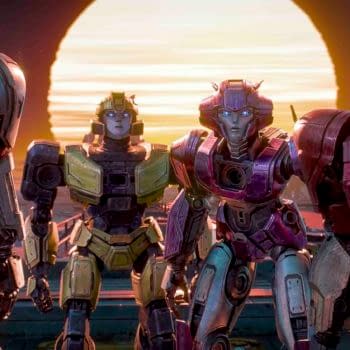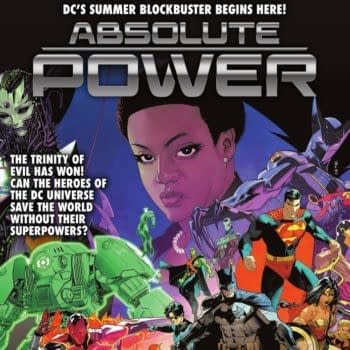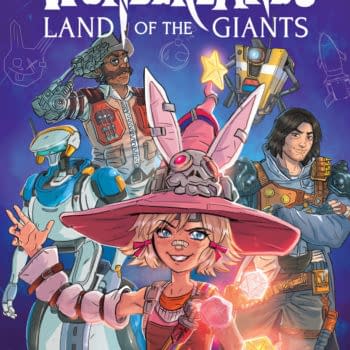Posted in: Comics, NYCC | Tagged: Alison Sampson, Andrew MacLean, cliff chiang, Hadrian's Wall, Head Lopper, HRL, image, image 25 years, image comics, Jordie Bellaire, kyle higgins, marjorie liu, Monstress, Nikki Ryan, NYCC, nycc 2017, paper girls, the family trade, winnebago graveyard
Image Comics Gives Us A Peek Into The Creative Process At NYCC
Rosilyne Bean wrote from New York Comic Con 2017:
Today, Image Comics closed NYCC with a panel entitled Image Comics: The Future of Storytelling.
David Brothers (Branding Manager at Image Comics) hosted the panel, and was joined by Marjorie Liu (Monstress), Cliff Chiang (Paper Girls), Kyle Higgins (Hadrian's Wall), Nikki Ryan (The Family Trade), Andrew MacLean (Head Lopper), and Alison Sampson (Winnebago Graveyard).
Nikki Ryan is the co-creator of The Family Trade, an action story based in our world with a twist. There is a floating city that houses a secret family of power, and their youngest member, Jessa, manages to mess things up while learning the family business.
Jessa is a headstrong character who relies on her wits and fight moves to get herself out of the trouble she inevitably causes. This series was created to be friendly to all ages, so while creating the artwork for the series, the creators and artists had to be mindful of content while still maintaining its identity as an action comic. While there is no gore or dismemberment, there are a lot of scenes of Jessa springing off of people or using her movement to take out enemies.
Ryan advises aspiring artists to participate in Kickstarter anthologies to get their work out there. They are always looking for submissions for projects like this, and the more backers you are able to get, the more work gets into people's hands. Other successful artists like to back Kickstarter projects, and it is a way to be seen. Networking at comic con or conventions is also important. Make friends with other artists without being pushy.
Marjorie Liu's Monstress is a dark steampunk epic fantasy starring a girl with a monster inside of her. Cats, witches, and fox girls are also around. Liu focuses on world building; there is more going on in this world that doesn't have to do with the story. She also looks to classic war recruitment posters for inspiration for design elements.
Higgins's love letter to '70s and '80s sci-fi is Hadrian's Wall. He said he struggled with building a crew of characters within story of man and his ex-wife, and the pages are complicated to put together color-wise. The first couple pages of Hadrian's Wall are silent; Higgins stripped the sound out because it becomes more impactful and evocative.
Higgins says for aspiring creators, self-promotion is key. Always be producing, he says. Keep putting stuff out there. Make a web comic as a stepping stone. Pay attention to lettering and colors on your comic, and it will look more professional.
Andrew MacLean and Head Lopper were up next. He says he almost never has to leave artist Jordie Bellaire notes on art. Why did they choose the title? It's simple, really: because it's fun.
Alison Sampson has a hit with Winnebago Graveyard. They put a big emphasis on tone, color, and brightness. The book tells stories with symbols, alluding to occult without being explicit. Not knowing entirely what something is can make it scarier, Sampson says. Her advice to creators: always be questioning what the reader is thinking. How the book came about: she got bored after a project, so someone suggested she draw a comic. She submitted a bookcase drawing to CBR and 50 mins later someone contacted her to help with the project.
Lastly, the great Cliff Chiang talked a bit about Paper Girls. He uses a lot of real-life lighting to show it's nighttime without being too dark. Lots of thought goes into coloring; he made subtle differences between panels to give a sense of lighting. It's OK to be abstract instead of literal, he says. He used color to make dialog and sounds more organic, almost feeling like background noise. Chiang started as an editor and realized he would rather be drawing comics. You have to figure out what you want to be doing, he says. Start building your base.
It's always a great time to listen to creators' processes, and this was no different.























